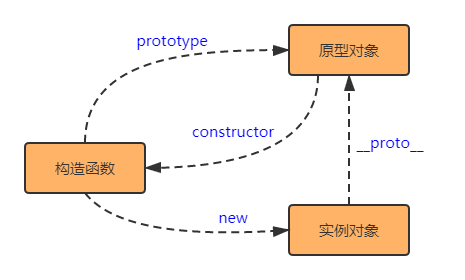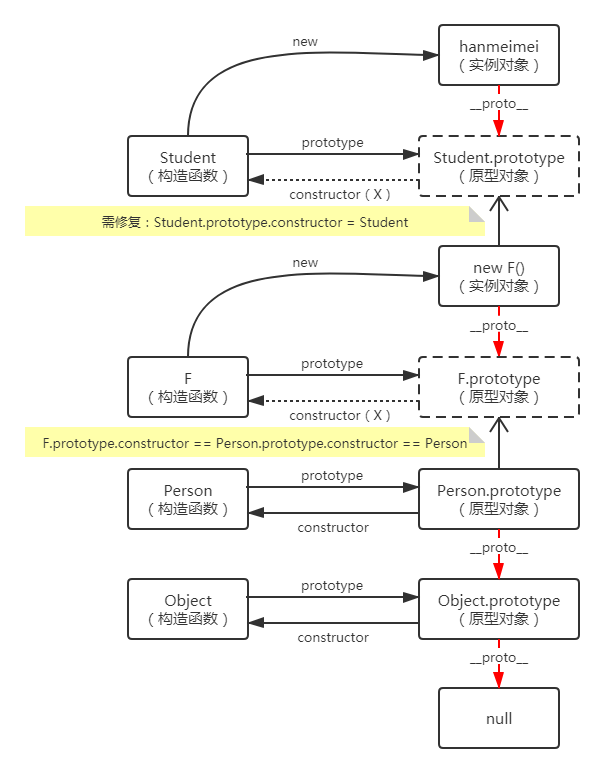函数式编程 函数式编程是一种编程范式,它将电脑运算视为函数的计算。
编程范式(programming paradigm),指的是计算机编程的基本风格或典范模式。
常见的编程范式有:函数式编程、程序编程、面向对象编程、指令式编程等,其他的,如,声明式编程(eg. SQL)、泛型编程。
函数是“第一等公民” 即函数可以出现在任何地方,比如可以把函数作为参数传递给另一个函数,不仅如此还可以将函数作为返回值。
闭包(Closure) 和 高阶函数 闭包可以理解成“定义在一个函数内部的函数”。
1 2 3 4 5 6 7 8 function func1 ( var num = 100 ; function func2 ( return num; } return func2; } console .log(func1()());
上例中,func2 即为闭包。一般这种情况下,可以用匿名函数的写法:
1 2 3 4 5 6 7 function func1 ( var num = 100 ; return function ( return num; }; } console .log(func1()());
高阶函数 指 接受函数作为参数 或 将函数作为返回值 的 函数。上例中,func1 的返回值是一个函数,func1 即为高阶函数。
Lambda演算 与 函数柯里化 所谓柯里化就是把具有较多参数的函数转换成具有较少参数的函数的过程。
1 2 3 4 5 6 7 8 9 10 11 12 13 function sum (a, b, c ) return a + b + c; } sum(1 , 2 , 3 ); function sum (a ) return function (b ) return function (c ) return a + b + c; } } } sum(1 )(2 )(3 );
可以看出,柯里化是以闭包为基础的。https://www.zhihu.com/question/37774367/answer/192978122
面向对象还是基于对象? 先说下结论:JS 中有对象的概念,但又不是纯粹的面向对象编程语言。
没有类的概念,而是直接使用对象 虽然 ECMAScript 2015 中引入了类,但实质上是JS现有的基于原型的继承的语法糖 。JS中的一切皆对象 。
1 2 3 4 var x = new Function ();var x = function (console .log(x instanceof Function );function x (console .log(x instanceof Function );var o = {};
通过原型实现继承 原型 是一种管理对象继承的机制:
1 2 3 4 5 6 7 8 9 10 11 12 13 14 15 16 17 18 19 20 21 22 23 24 25 26 27 28 29 30 31 32 33 34 35 36 37 38 39 function Person (name ) this .name = name; } Person.prototype.say = function (message ) console .log(this .name + ': ' + message); }; function Student (name, grade ) Person.call(this , name); this .grade = grade; } function inherits (Child, Parent ) var F = function ( F.prototype = Parent.prototype; Child.prototype = new F(); Child.prototype.constructor = Child; } inherits(Student, Person); Student.prototype.getGrade = function ( return this .grade; }; var hanmeimei = new Student('韩梅梅' , '一年级' );console .log(hanmeimei.name, hanmeimei.grade);hanmeimei.say('Hello World.' ); console .log(hanmeimei instanceof Student);console .log(hanmeimei instanceof Person);console .log(hanmeimei.__proto__ === Student.prototype);console .log(hanmeimei.__proto__.__proto__ === Person.prototype);
上例中的原型链(红色箭头部分)如图所示:
1 2 3 4 5 6 7 8 9 10 11 12 13 14 15 16 17 18 19 20 21 22 23 24 25 26 class Person constructor (name) { this .name = name; } say(message) { console .log(this .name + ': ' + message); } } class Student extends Person constructor (name, grade) { super (name); this .grade = grade; } getGrade() { return this .grade; } } var hanmeimei = new Student('韩梅梅' , '一年级' );console .log(hanmeimei.name, hanmeimei.grade);hanmeimei.say('Hello World.' ); console .log(hanmeimei instanceof Student);console .log(hanmeimei instanceof Person);console .log(hanmeimei.__proto__ === Student.prototype);console .log(hanmeimei.__proto__.__proto__ === Person.prototype);
在原型继承基础上实现多态 继续上面的示例:
1 2 3 4 5 6 7 8 9 10 Student.prototype.say = function (message ) console .log(this .name + '(' + this .grade + '): ' + message); }; var lilei = new Person('李磊' );lilei.say('How are you?' ); var hanmeimei = new Student('韩梅梅' , '一年级' );hanmeimei.say('Fine, thank you, and you?' );
Student覆盖Person的say方法,使得say方法在不同对象下调用有不同的逻辑。
所以,JS不是纯粹的面向对象(或者说不是我们理解的面向对象实现),而是结合自身语言特性来实现面向对象的特性。
既然没有类,为什么创建对象时要用new操作符? 要创建对象的新实例,必须使用new操作符,以这种方式调用构造函数实际上会经历4个步骤:
创建一个新对象。
将构造函数的作用域赋给新对象(因此 this 就指向了这个对象)。
执行构造函数中的代码(为这个新对象添加属性)。
返回新对象。
用构造函数new对象的代码大致如下:
1 2 3 4 5 6 7 function Person (name, age ) this .name = name; this .age = age; } var person = new Person('Hanmeimei' , 21 );console .log(person.name, person.age);console .log(person instanceof Person);
那么我们是否可以模拟new的过程来自主实现同等的效果呢:
1 2 3 4 5 6 7 8 9 function newFunc (constructor ) var o = {}; o.__proto__ = constructor .prototype; constructor .apply(o, Array.prototype.slice.call(arguments, 1)); return o; } var person1 = newFunc(Person, 'Hanmeimei', 22); console.log(person1.name, person1.age);// Hanmeimei 22 console.log(person1 instanceof Person);// true
参考资料 JS中new操作符的工作原理是什么 JavaScript的原型继承 JavaScript的class继承 JavaScript常见的六种继承方式

